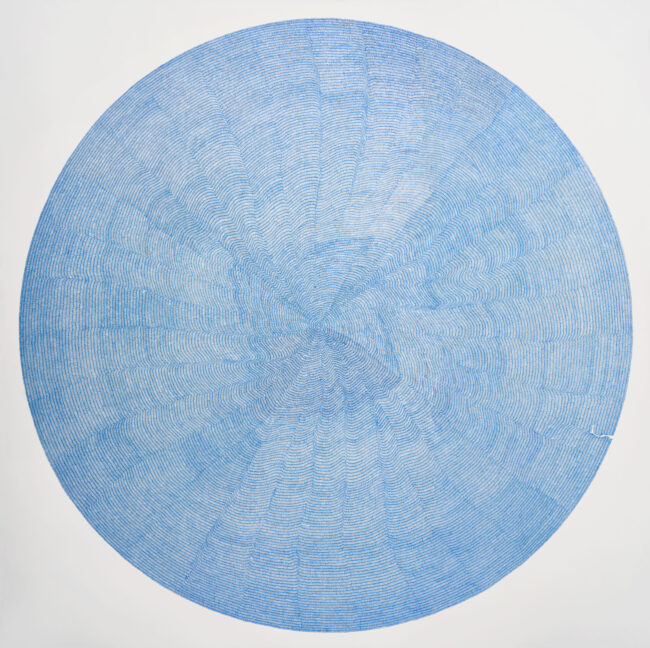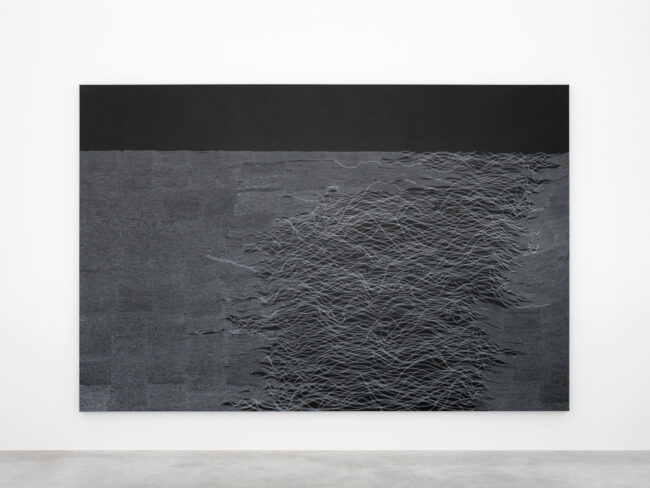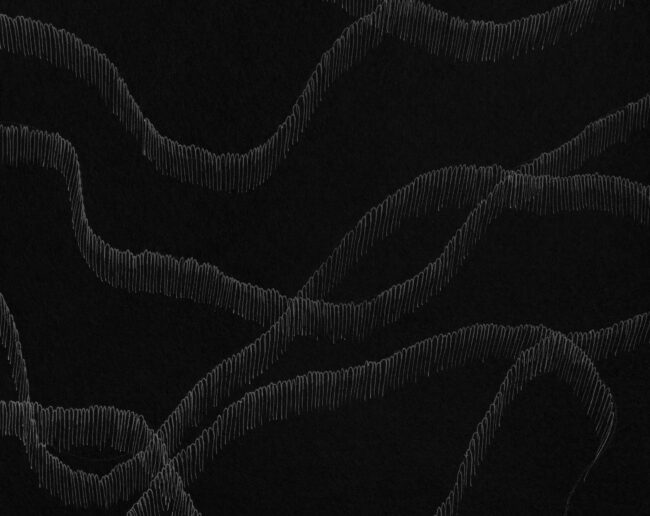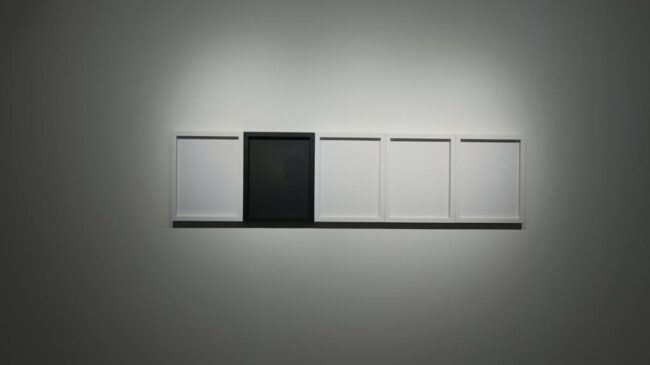In this candid conversation, Waqas Khan shares his artistic journey, failures, successes, achievements and all that the readers want to know I
In this candid conversation, Waqas Khan shares his artistic journey, failures, successes, achievements and all that the readers want to know
If you have never seen Waqas Khan’s work up close, you have never truly seen his work. No photograph, book, or digital reproduction can capture the paradox that defines his art – the immense and the infinitesimal existing in perfect harmony. From a distance, his expansive canvases appear as ethereal, meditative fields, vast yet delicate. But step closer, the illusion dissolves into an intricate cosmos of minuscule marks, dots and lines so meticulously placed that they seem almost weightless, pulsating with a quiet rhythm. To grasp the true scale of his labor, you must lean in, almost as if in reverence, sometimes even holding a magnifying glass to witness the astonishing precision of his hand. It is an experience that cannot be replicated – one that demands presence, patience, and a deep surrender to the intimacy of detail.

Khan often describes himself as a product of failures, each misstep, rejection, and struggle shaping the artist he is today. His journey has been anything but linear, marked by obstacles that, in retrospect, became defining moments of his career. It took him three years to gain admission into the National College of Arts, a period that tested his perseverance and forced him to confront the weight of uncertainty. Even after being in NCA, his thesis was rejected, a setback that might have discouraged many, but it became yet another lesson in resilience for Khan. His first-ever solo show, held in Karachi during Ramadan, was an experience that underscored the unpredictability of the art world. Only two people attended – a stark contrast to the acclaim his work would later receive. Yet, in each of these moments of failure, he found something invaluable: the ability to persist, to redefine success on his terms, and to create without seeking validation.

Contrary to the widely held interpretations of his work – often labeled as meditative, Sufi, or spiritual – Khan sees his art as something far more instinctive and personal. While it is true that poetry was an inescapable part of his upbringing, woven into everyday conversations by the elders around him, this influence exists more in his subconscious than as a deliberate pursuit. It seeps into his work not as an aesthetic goal but as an undercurrent of his cultural and linguistic memory. His process is not one of spiritual transcendence but of raw engagement with the act of mark-making. The dots and lines that fill his canvases are not symbols of mysticism to him; they are characters, each with a rhythm, a movement, a presence of its own. In his eyes, his compositions are not meditative stillness but dynamic choreography, his characters dancing across the vastness of his surfaces. His work is not an attempt at reaching higher states of consciousness but rather an intimate, physical act – one that stems from discipline, repetition, and an almost obsessive attention to detail.

Khan delights in the multiplicity of meanings that people find in his work. He does not dictate how his art should be understood; rather, he embraces the fluidity of interpretation. A self-proclaimed people person, he finds joy in standing quietly among gallery visitors, listening to their reactions, absorbing their perspectives, and engaging in unfiltered conversations about his work. He believes that once an artwork leaves his hands, it belongs as much to the viewer as it does to him. Every interpretation, whether deeply philosophical, emotional, or entirely unexpected, adds another layer to the evolving dialogue surrounding his practice.

Khan’s recent project with HBL marked a significant moment in his practice, one that deepened his exploration of space, memory, and perception. Commissioned to create artwork for the bank’s newly acquired building in Karachi, he approached the project not as a detached contributor, but as someone who needed to live and breathe the space. He spent extended periods inside the building, allowing its architecture, energy, and movement to seep into his understanding. For Khan, this wasn’t just about filling walls with art; it was about embedding his work into the very fabric of the space. He wanted the artworks to be felt rather than simply seen – subtle presences that would integrate into the collective memory of those who inhabited the building daily. His goal was to create a sensory experience, something that would resonate on an instinctive level rather than demanding immediate visual recognition.

This introspective approach to art-making took on an even deeper dimension when he began documenting his journey in book form: “A man with a pen”. The process of assembling his life and work into a tangible archive became both reflective and revealing for him. Tracing the evolution of his practice allowed him to confront the shifts, both subtle and seismic, that had shaped his artistic language over time. It was not just a documentation of where he had been but an active re-engagement with his thought processes. More than anything, the book became a space for dialogue – an open-ended conversation between his past, present, and future, as well as between himself and his audience. It reinforced the idea that his practice is never static but always expanding, shifting, and redefining itself with each new encounter.

For Khan, art-making is not just about producing work, it is about becoming. Looking back, he sees how it has fundamentally shaped who he is today. Once someone who reveled in the carefree joys of college life, he now believes that being an artist demands something deeper: an unshakable presence. To create, one must be fully there – engaged not just with the medium but with the space, the rhythm, and the energy of the work itself. It is a process that requires patience, discipline, and an acute awareness of every mark made and every stroke placed. This commitment to presence has not only defined his artistic practice but has also shaped him an individual, instilling in him a deep sense of connection, not just to his art but to the world around him.
Image Courtesy: HBL Art Collection
